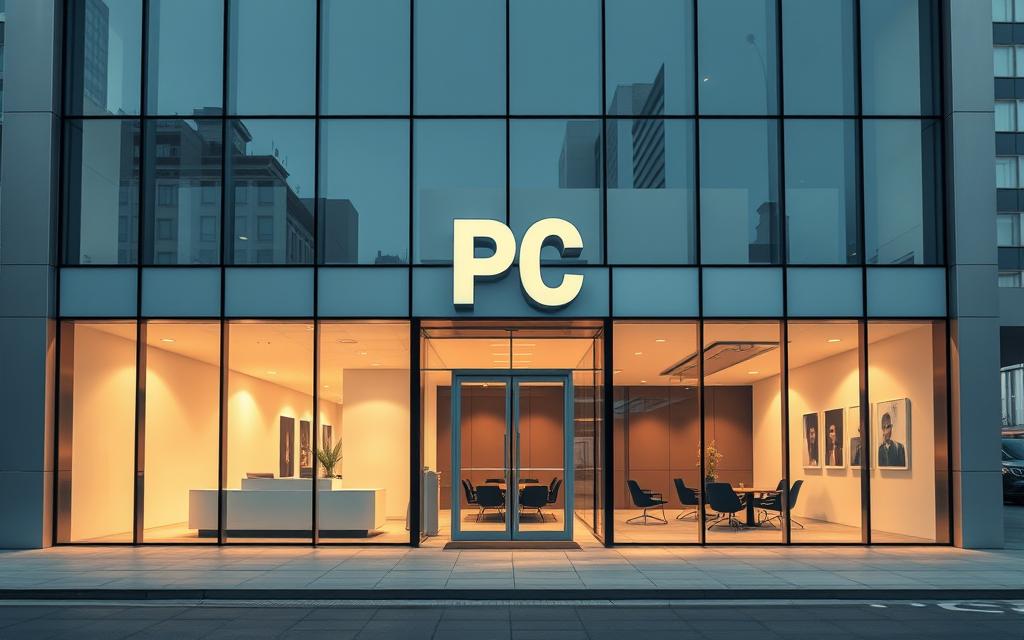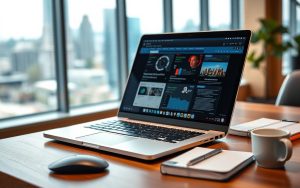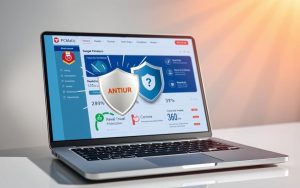Table of Contents
In the world of business, the term “PC” often follows the names of licensed professionals. This abbreviation stands for Professional Corporation, a legally distinct entity designed for individuals in specialized fields. Unlike traditional corporations, PCs cater to those in professions like law, medicine, and accounting.
Forming a Professional Corporation requires state registration, ensuring compliance with specific regulations. These entities provide liability protection and tax benefits, making them a popular choice among professionals. However, eligibility varies by state, with some regions imposing restrictions on certain industries.
Choosing the right business structure is crucial for managing liability and optimizing tax strategies. A Professional Corporation offers a tailored solution for licensed experts, blending legal security with professional credibility.
What Does PC Stand For in Business?
A Professional Corporation (PC) is a specialized business entity tailored for licensed experts. This structure is designed for individuals in regulated fields, offering legal and financial advantages. Unlike general corporations, PCs are restricted to those with professional licenses, ensuring compliance with industry standards.
Definition of Professional Corporation (PC)
A Professional Corporation is a legal entity formed by licensed professionals to provide services in their field. This structure separates personal and business liabilities, protecting shareholders from certain risks. However, it does not shield individuals from malpractice claims.
Common Professions That Use PC
Professionals in fields like law, medicine, engineering, and accounting often choose the PC model. These industries require specialized licenses, making the PC structure a natural fit. For example, attorneys and doctors frequently operate under this entity to manage liability and taxes effectively.
State-Specific Rules for PCs
Regulations for Professional Corporations vary by state. For instance, California mandates PCs for certain professions, while Massachusetts requires multiple owners. Understanding these rules is crucial when starting a law firm or other licensed business. Always consult local laws to ensure compliance.
What Does PC Stand For After a Business Name: Key Features
Licensed professionals often opt for the Professional Corporation model for its distinct benefits. This structure combines legal security with tailored solutions for specialized fields. Below, we explore its key features, including liability protection, tax implications, and management structure.

Liability Protection in PCs
One of the primary advantages of a Professional Corporation is its liability protection. Shareholders are shielded from personal responsibility for business debts. However, this protection does not extend to individual malpractice claims. For example, a doctor in a PC is personally liable for their own errors but not for the actions of other shareholders.
This structure ensures that personal assets remain secure from business-related lawsuits. It’s a critical feature for professionals in high-risk fields like medicine and law.
Tax Implications for Professional Corporations
Taxation is a significant consideration for Professional Corporations. Depending on the classification, PCs may face a flat tax rate of 35% if categorized as personal service corporations. Shareholders can choose between C corp, S corp, or personal service corp status to optimize their taxes.
However, C corps are subject to double taxation, where both corporate income and shareholder dividends are taxed. S corps avoid this issue but have stricter eligibility requirements. Consulting a tax professional is essential to determine the best option.
Management Structure of PCs
Professional Corporations require a formal management structure. This includes bylaws, a board of directors, and officer roles. Shareholders have voting rights, and the board oversees major decisions. This hierarchy ensures compliance with state regulations and maintains professional standards.
Unlike LLCs, PCs have less flexibility in management. However, this structure provides clarity and accountability, which is crucial for licensed professionals.
| Feature | Professional Corporation | LLC |
|---|---|---|
| Liability Protection | Shields from business debts | Shields from all liabilities |
| Tax Options | C corp, S corp, personal service corp | Pass-through taxation |
| Management Flexibility | Formal structure required | Flexible management options |
PC vs. LLC: Understanding the Differences
When deciding between a Professional Corporation and a Limited Liability Company, understanding their differences is essential. Both entities offer unique benefits, but they cater to distinct needs. Below, we explore key areas like liability protection, taxation, and management flexibility to help you make an informed choice.
Liability Protection: PC vs. LLC
Both PCs and LLCs provide liability protection, but their scope differs. A Professional Corporation shields shareholders from business debts but not from individual malpractice claims. For example, a doctor in a PC remains personally liable for their own errors.
On the other hand, an LLC offers broader protection, covering all liabilities. However, single-member LLCs in some states may lack this safeguard. Understanding these nuances is crucial for professionals in high-risk fields.
Taxation: PC vs. LLC
Taxation is another critical factor. PCs are typically taxed as C corps, S corps, or personal service corporations. C corps face double taxation, where both corporate income and shareholder dividends are taxed. S corps avoid this but have stricter eligibility requirements.
LLCs, however, offer more flexibility. They can choose to be taxed as partnerships, S corps, or disregarded entities. This versatility often makes LLCs a preferred choice for businesses seeking tax optimization.
Management Flexibility: PC vs. LLC
Management structures also vary significantly. PCs require a formal setup, including bylaws, a board of directors, and officer roles. This structure ensures compliance with state regulations but limits flexibility.
LLCs, in contrast, operate under operating agreements, allowing for more adaptable management. This makes LLCs ideal for businesses that value simplicity and autonomy.
Ultimately, the choice between a PC and an LLC depends on your specific needs. Professionals in regulated fields may prefer PCs for their tailored benefits, while others might opt for LLCs for their flexibility and broader liability protection.
PC vs. LLP: A Comparative Analysis
Professionals in regulated fields often face the decision between forming a Professional Corporation or a Limited Liability Partnership. Each entity offers unique benefits, but understanding their differences is crucial for making the right choice. Below, we explore key areas like liability protection, taxation differences, and management structure.

Liability Protection in LLPs
In an LLP, partners enjoy protection from the malpractice of other partners. For example, in a law firm, one attorney’s errors won’t affect the personal assets of others. However, some states require at least one partner to have unlimited liability, which can be a drawback.
In contrast, PCs shield shareholders from business debts but not from individual malpractice claims. This makes PCs a better fit for professionals who want separation between personal and business liabilities.
Taxation Differences Between PC and LLP
LLPs are taxed as partnerships, meaning profits pass through to partners and are taxed at individual rates. This avoids double taxation, a common issue for PCs classified as C corps. However, PCs offer more flexibility, allowing shareholders to choose between C corp, S corp, or personal service corp status.
For professionals seeking simplicity, LLPs are often the preferred choice. But those looking for tax optimization might find PCs more advantageous.
Management Structure: PC vs. LLP
PCs require a formal management structure, including bylaws, a board of directors, and officer roles. This ensures compliance with state regulations but limits flexibility. LLPs, on the other hand, operate under partnership agreements, which are more adaptable.
Additionally, PCs have perpetual existence, meaning they continue even if shareholders leave. LLPs dissolve when a partner exits, which can disrupt business continuity. This makes PCs a more stable option for long-term operations.
| Feature | Professional Corporation | Limited Liability Partnership |
|---|---|---|
| Liability Protection | Shields from business debts | Protects partners from each other’s malpractice |
| Taxation | C corp, S corp, personal service corp | Partnership taxation |
| Management | Formal structure required | Flexible partnership agreements |
| Continuity | Perpetual existence | Dissolves with partner exit |
“Choosing between a PC and an LLP depends on your specific needs. Professionals in high-risk fields may prefer PCs for their stability, while others might opt for LLPs for their flexibility.”
Choosing the Right Business Structure: PC, LLC, or LLP?
Selecting the appropriate business entity is a critical decision for licensed professionals. The choice between a Professional Corporation (PC), Limited Liability Company (LLC), or Limited Liability Partnership (LLP) depends on various factors. Each structure offers unique benefits and challenges, making it essential to evaluate your specific needs.

Factors to Consider When Choosing a Business Structure
Several key factors influence the decision-making process. First, consider your profession and industry. Certain fields, like law and medicine, often favor PCs due to their tailored benefits. Second, evaluate your growth plans and funding needs. Some entities, like LLCs, offer more flexibility in equity structure.
Third, review state laws and regulations. For example, California imposes specific limitations on single-member LLCs. Fourth, assess your tax goals. PCs may allow higher 401(k) contributions, while LLCs offer pass-through taxation. Finally, analyze your liability needs. PCs shield from business debts but not malpractice claims, whereas LLPs protect partners from each other’s errors.
Pros and Cons of PCs, LLCs, and LLPs
Each entity has distinct advantages and drawbacks. PCs provide strong liability protection and are ideal for licensed professionals. However, they require a formal management structure and may face double taxation if classified as C corps.
LLCs offer flexibility in management and taxation but may lack the same level of liability protection in some states. LLPs are excellent for partnerships, protecting partners from each other’s malpractice, but they dissolve if a partner exits. Understanding these differences is crucial for making an informed choice.
State-Specific Considerations
State laws play a significant role in determining the best entity. For instance, seven states impose LLC franchise taxes, which can affect your tax consequences. California’s restrictions on single-member LLCs may make PCs a better option for solo practitioners.
Additionally, some states require multiple owners for LLPs, while others allow single-member LLCs. Always consult local regulations to ensure compliance and avoid costly pitfalls. A thorough understanding of state rules can save time and resources in the long run.
| Feature | Professional Corporation (PC) | Limited Liability Company (LLC) | Limited Liability Partnership (LLP) |
|---|---|---|---|
| Formation Costs | Higher | Moderate | Moderate |
| Liability Scope | Shields from business debts | Broad protection | Protects partners from each other’s malpractice |
| Tax Options | C corp, S corp, personal service corp | Pass-through taxation | Partnership taxation |
| Ownership Rules | Licensed professionals only | Flexible | Partnership agreements |
Conclusion
Choosing the right entity for your professional practice requires careful consideration of legal, financial, and operational factors. A Professional Corporation offers tailored benefits for licensed experts, particularly in managing liability and optimizing tax strategies. However, state-specific regulations play a critical role in determining eligibility and compliance.
When deciding between entities, weigh the trade-offs. PCs provide strong protection from business debts but not individual malpractice claims. They also require a formal management structure, which may limit flexibility. Emerging trends show a decline in PCs, with many professionals opting for PLLCs or LLCs instead.
Before forming your entity, consult legal and financial advisors to ensure alignment with your goals. Be cautious of IRS audit triggers, especially in S corp compensation plans. By understanding these nuances, you can make an informed decision that supports your professional growth and safeguards your assets.
FAQ
What is a Professional Corporation (PC)?
A Professional Corporation is a business entity formed by licensed professionals, such as doctors, lawyers, or accountants. It offers liability protection while allowing professionals to practice within their field.
Which professions typically use a PC structure?
Professions like medical practitioners, attorneys, engineers, and architects often use PCs. This structure is ideal for licensed professionals who want liability protection for their personal assets.
How does liability protection work in a PC?
A PC shields personal assets from business-related lawsuits. However, professionals remain personally liable for their own malpractice or negligence.
What are the tax implications of a Professional Corporation?
PCs face double taxation, where the corporation pays taxes on its income, and shareholders pay taxes on dividends. However, some states allow PCs to elect S Corporation status to avoid this.
How does a PC differ from an LLC?
A PC is designed for licensed professionals, while an LLC is more versatile. PCs offer liability protection specific to professional practices, whereas LLCs provide broader liability protection and tax flexibility.
What are the management differences between a PC and an LLP?
A PC is managed by its directors and shareholders, while an LLP allows partners to share management responsibilities. LLPs also offer liability protection but are often used by partnerships rather than licensed professionals.
What factors should I consider when choosing between a PC, LLC, or LLP?
Consider your profession, liability protection needs, tax consequences, and state-specific rules. PCs are ideal for licensed professionals, while LLCs and LLPs offer more flexibility for other business types.
Are there state-specific rules for forming a PC?
Yes, each state has its own regulations for PCs. Some states require specific licenses or restrict certain professions from using this structure. Always check local laws before forming a PC.









